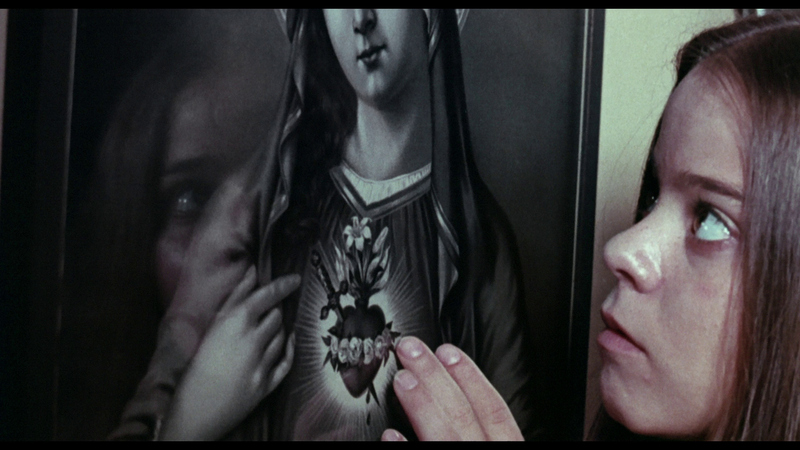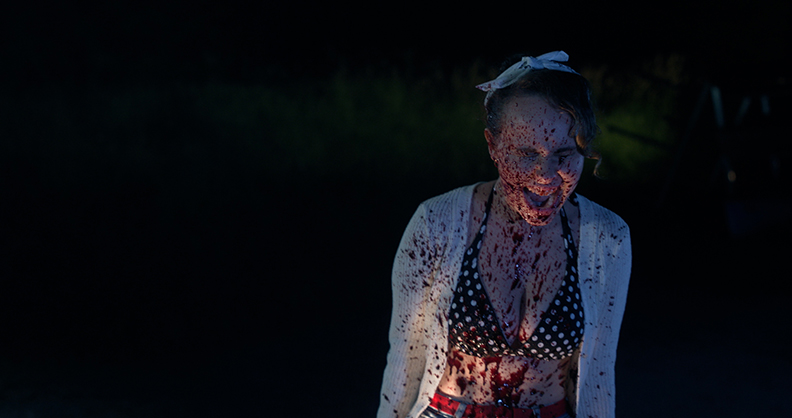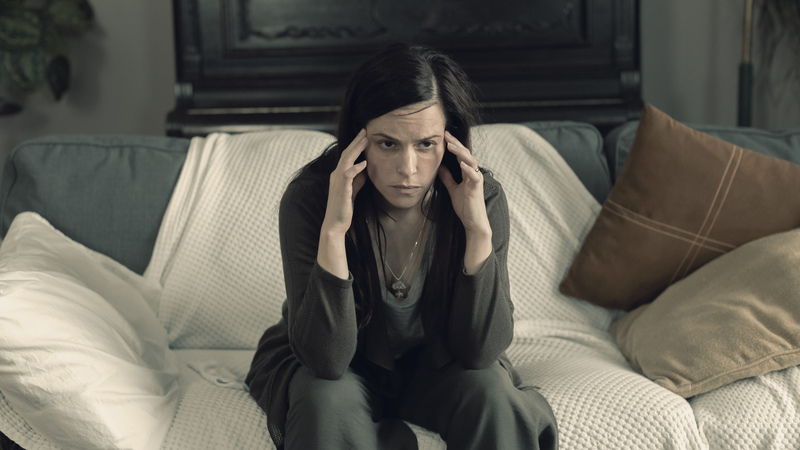
A Haunting Tale of Fear, Faith, and Family
MOVIE REVIEW
Alice, Sweet Alice [Limited Edition]
–
Genre: Horror
Year Released: 1976, Arrow Video 4K 2025
Runtime: 1h 47m
Director(s): Alfred Sole
Writer(s): Rosemary Ritvo, Alfred Sole
Cast: Linda Miller, Mildred Clinton, Paula E. Sheppard, Niles McMaster, Jane Lowry, Rudolph Willrich, Michael Hardstark, Alphonso DeNoble, Gary Allen
Where To Watch: available February 11, 2025; order your copy here: www.arrowvideo.com, www.mvdshop.com, or www.amazon.com
RAVING REVIEW: Horror is at its best when it warps the familiar into something menacing, forcing us to question the safety of places we once trusted. When a film takes childhood innocence, religious devotion, and family ties and twists them into something unsettling, it creates a lasting impression. ALICE, SWEET ALICE thrives on this kind of discomfort, crafting an atmosphere thick with paranoia, deception, and buried trauma. With a psychological depth that lingers beneath its slasher-like surface, it pulls viewers into a world where faith and violence walk hand in hand, and suspicion poisons every interaction.
At the story's center is a young girl whose intelligence and erratic behavior make her an easy scapegoat when tragedy strikes. A sacred ceremony turns into a crime scene, and with few places to turn, the community is quick to point fingers. The film immediately plays with the audience's perception, making every scene a guessing game. Is she capable of such acts, or is something more sinister at play? The film doesn’t offer easy answers, layering its mystery with psychological complexity that keeps the audience uneasy.
One of the most striking elements of ALICE, SWEET ALICE, is its ability to manipulate reality. It turns ordinary objects into sources of terror— a translucent mask, a raincoat, even the rigid traditions of the church. These seemingly harmless visuals become unsettling, feeding into the film’s atmosphere. The religious overtones amplify the tension, using faith as a shield and a weapon. Rituals that should bring comfort instead cast long shadows, making every whispered prayer feel like a curse. The film leans into the idea that guilt and repression can be just as dangerous as any knife-wielding maniac.
The cinematography does much of the heavy lifting when it comes to unease. There’s a calculated use of space that makes the film feel suffocating, whether in dimly lit apartments or the echoing halls of a church. The camera lingers just long enough to make the audience second-guess what they’re seeing, emphasizing paranoia in a way that extends beyond the characters. The lighting, often stark and uninviting, strips away warmth, creating an environment where even home feels hostile. This visual approach heightened the suspense, making it difficult to tell where the next threat would come from.
What keeps the tension alive is the film’s refusal to play by traditional horror rules. It doesn’t rely on easy jump scares or predictable twists but builds its fear through character interactions and a growing sense of dread. The protagonist isn’t written as a conventional horror lead—she isn’t purely sympathetic or outright monstrous. Instead, she exists in a deeply unsettled and morally ambiguous space. Her self-assurance is both a strength and a curse, allowing her to navigate dangerous situations without breaking, yet making her seem cold and unbothered when she should be terrified. That detachment is what makes her so unpredictable.
Budget constraints are evident in certain areas, but the film works within its limitations, never overextending itself. Instead of leaning on elaborate effects, it builds tension through performances, setting, and direction. The lead actress performs far beyond what’s expected from young actors in horror, making her presence on screen impossible to ignore. She carries the film with a balance of vulnerability and quiet menace, embodying a character as much an enigma as the film’s central mystery.
The film’s lasting impact comes from its ability to make the audience uncomfortable beyond the usual slasher tropes. It leaves a creeping unease lingering long after the story is told. Its themes of repression, religious guilt, and the fragility of perception make it stand out, ensuring it remains a cult favorite in psychological horror. While it may not be flawless, its bold choices and unsettling tone cement its place in the genre. ALICE, SWEET ALICE isn’t just about the fear of what lurks in the dark—it’s about the fear of what people are willing to believe.
Please visit https://linktr.ee/overlyhonestr for more reviews.
You can follow me on Letterboxd, Instagram, Twitter, and YouTube. My social media accounts can also be found on most platforms by searching Overly Honest Reviews.
I’m always happy to hear from my readers; please say hi or send me any questions about movies.
[photo courtesy of ARROW VIDEO, MVD ENTERTAINMENT]
DISCLAIMER:
At Overly Honest Movie Reviews, we value honesty and transparency. Occasionally, we receive free items for review, including DVDs, Blu-rays, CDs, Vinyl, Books, etc. We assure you that these arrangements do not influence our reviews, as we are committed to providing unbiased and sincere evaluations. We aim to help you make informed entertainment choices, regardless of our relationship with distributors or producers.
Amazon Affiliate Links:
Additionally, this site contains Amazon affiliate links. If you purchase through these links, we may receive a commission. This affiliate arrangement does not affect our commitment to honest reviews and helps support our site. We appreciate your trust and support in navigating these links.



Average Rating